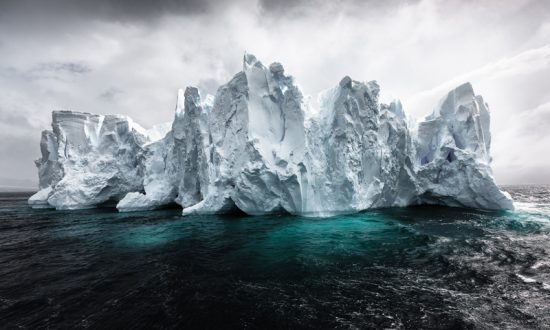Slam books are a gateway to a teen’s glittery world. The questions that a typical Slam book poses have remained the same throughout the years, but it’s the responses that pack all the fun. Most of us have got different answers for the same questions as we grow. Especially when it comes to the question “Favourite Place To Travel To”. Of all the countries in the world, it is rare to find a kid pick Antarctica, and stick with it through the years.
Rajasweta Datta has always dreamt of paying the icy landscape a visit and watch Polar Bears. A few episodes of her favourite channels, Nat Geo and Discovery, taught her that Polar bears do not habitat the Antarctica. But that did not deter her; in fact, it made her even more curious. After completing her Master’s in Technology in Remote Sensing she worked as a Junior Research Fellow at the Indian Institute of Remote sensing, Indian Space Research Organization, Dehradun for a year. It was during this stint with ISRO that she received the scholarship from the Ministry of Business, Innovation & Entrepreneurship in New Zealand.
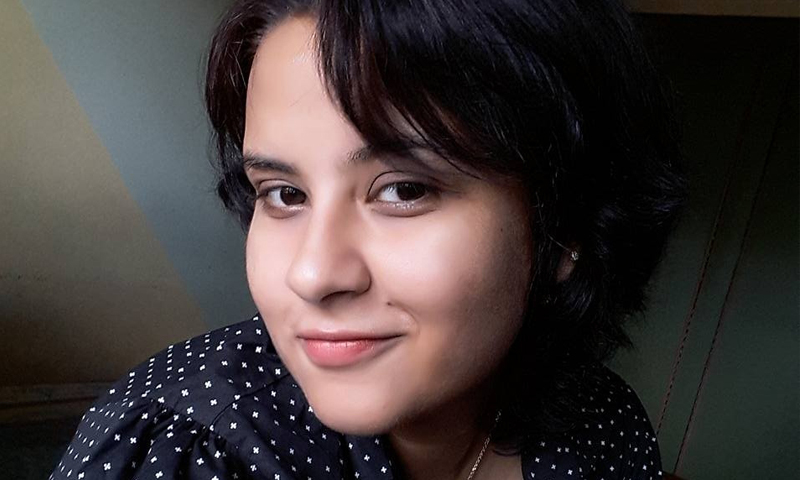
Winter is Coming
When Sweta landed in New Zealand in June 2016, it was not without nervous butterflies fluttering crazy. But she knew that something magical was just around the corner. Channelling her inner Dory, she just kept swimming, or in her case, getting her new life in New Zealand to order. She soon experienced that magical moment of realizing her dreams. She was asked to join the research team that was set course to the 5th largest continent of the world, Antarctica. The trip was part of her doctorate course at Department of Geography in University of Canterbury, New Zealand.
Sweta was working for the DryVer research group that consisted of scientists from different parts of world and from different universities and research organizations working together in understanding the ecosystem and climate of a specific region of Antarctica called the Mc Murdo Dry Valleys.
The Dry Valleys
The Dry Valleys are the largest span of ice-free region in Antarctica and is considered as one of the driest places on earth with scanty precipitation of less than 50mm/yr. Though the valley is dry, during summer they generate ephemeral streams that are formed due to glacial melt. The life form there is mostly microbial in nature, there are also some heterotrophic life forms which survive on this seasonal stream during the summer period.
Dry Valleys are unique as they are the closest twin to Mars’s ecosystem on earth and lot of scientists work on these areas for understanding lifeforms developed in extreme climates and used as test sites for Mars bound equipment. They are located in southern Victoria land and consist of 3 major ice-free valleys. Taylor, Wright and Victoria. The valleys that Sweta was to visit was the Wright valley, which hosts the longest river in Antarctica called Onyx.
Preparations in Top Gear
Sweta was to visit the continent during the austral summer (Beginning of October to end of March). Preparations for the 26-day trip started 3 months before. The research equipment needed to be cleaned properly as they could carry microbial or smaller insect and plant species from New Zealand to Antarctica, which might act as a biohazard to the continent’s unique ecosystem.
She, along with her group, were to collect special gears from Antarctic New Zealand Centre in Christchurch for wearing in Antarctica, which included special sets of outfits called ECW (Extreme Climate Wear). They had to wear the ECWs while travelling through Antarctica, as it could help a person survive extreme conditions.
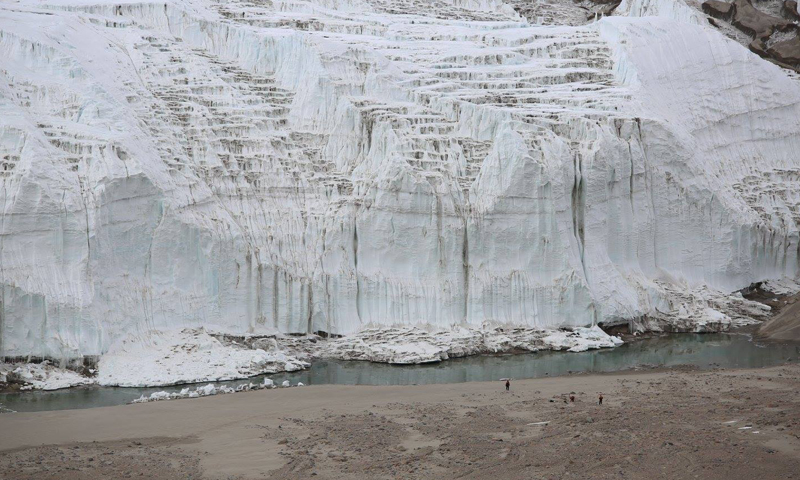
Sweta learnt that New Zealand and USA work together for Antarctic travel as both the countries research bases are located within half an hour walking distance from each other. Mc Murdo station of USA is the largest base in Antarctica and is size of a small town, the Scott base owned by New Zealand in Christchurch is a smaller base located on the south tip of Ross island.
The Boomerang Dilemma
The flight that took Sweta was charted for the 3rd day of the month of January 2017. But the thing about travelling to extreme places is that the weather is not only predictable, they can be nasty as well. Occasionally, flights bound to Antarctica fly halfway and return back to Christchurch, thanks to the temperament weather of the Ross sea region. These return flights are called Boomerangs. Sweta was apprehensive of these boomerangs, but she had more pressing concerns.
Although Sweta was ecstatic for the trip and she gruelled long and hard for her research and defeated deadlines, as the moment of truth came closer, she panicked. She had zero camping skills and neither had she ever trekked nor was the outdoorsy type. Days flew by with a whirlwind of preparatory activities, but she had no clue how she was to endure the hardships of the trip. The young explorer received a lot of support from her peers and guides, but she would soon learn that nothing can truly prepare one for a visit to the Antarctica.
The D-Day
Third of January dawned bright and clear and Sweta reached the base only to be informed that the bad weather had cancelled her flight, the C-17 Globe Master. After two more unsuccessful tries, she could board her plane only on the 6th of January. This time it the Hercules C-130 that was waiting for her. The US Airforce flight took off from the Christchurch base with experts from the US Air Force and the US Army and a team of researchers and scientist from the USA and New Zealand.
The Hercules is a smaller plane in comparison to the C-17 Globe Master, and a much noisier one too. The passengers had to plug in their ears to cancel out the noise. This was in addition to the rugged sitting arrangement with no cabin or luggage space. Sweta felt like she was a US army soldier flying over a war zone in a Hollywood movie. However, she was not one to complain, as unlike a commercial flight, the passengers could visit the cockpit and peer down on the icy landscape of the Antarctica. Sweta took in all the broken polynyas (open water with ice) and the gradual transition of the broken sea ice to solid land covered in thick ice and white surface.
Land Ahoy!
In 7 hours, they touched down safely, albeit a bumpy one, on the Phoenix airfield airstrip on Antarctica’s Ross ice shelf, the continent’s largest ice shelf.
Marking history for herself, she set foot on the icy continent and was greeted by the coldest wind that she had ever experienced. The white expanse was a shock for her eyes. She had expected it to be icy white, but to feel it first-hand was a revelation.
She saw Mt. Erebus, the second-highest volcano in Antarctica from the air strip. The passengers were ushered onto a vehicle specially designed for travelling in the ice and land surface and provides a safe transport at the junction of floating ice and solid land surface. The team had to carry their own VHF receiver at all times for communication. Sweta also witnessed an ice-breaker ship, special ships that cut through the thick ice and move into the sea carrying goods, in action.
Home Away from Home
Their base, Scott base, was a small base and the interior was similar to a big back packer, with all amenities from common sitting area and bunk beds. The team could also enjoy a large dining hall with amazing food options three times a day and also regular snacks for tea. The base also had a sauna, something that is a necessity rather than a luxury in a place like Antarctica, a bar, and a souvenir store. In fact, Sweta had to occasionally look out the window to remind her that she is in fact on Antarctica.
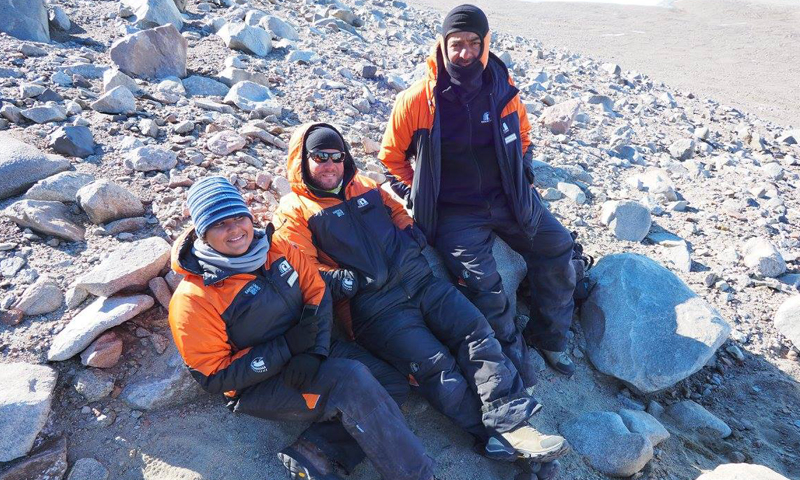
The team was often visited by penguins and seals. Some of the more inquisitive ones came closer to the people. The team spent the first day exploring the Scott base and preparing their respective gears, arranging food supplies, hoisting up tents and sleeping bag. Everyone had to arrange their amenities for transport to the valleys before their departure through helicopter.
Training and Camping
Sweta spent her first two days training with a group of 1st time visitors to Antarctica. The newbies were taken to Ross ice shelf, which is practically a place between nowhere on thick ice. They were taught to make tents, arrange sleeping bags, cut ice with axe and make igloos, administer emergency survival techniques, use survival kits, dispose their litter, cook food, use hydrated food, covert ice to drinkable water, and use toilets, which were practically buckets in tents.
The team was instructed to carry urine bottles at all times, and when the bottles were filled, they had to dump them in larger cannisters, which were moved back to Scott base with other litter. The whole idea was to have as much less impact on the environment as possible.
To avoid contaminating the pristine land, the team was asked to wipe their food bowls with baby wipes, as washing the bowls with water was a strict No. In case water had to be used, what little water was used to rinse the pans before cooking had to be collected so that it can be taken back to the base and properly disposed off. As for the leftover food, one needn’t bother about storing it away in the refrigerator, as the whole continent was one big icy refrigerator.
On the third day she, along with two others were taken to Brownworth camp using a helicopter in Wright valley. The rest of the research group was working on Vanda camp and members were moved from one camp to another through helicopter. Sweta was stationed at Brownworth camp at all times.
Armed with information, Sweta was excited to go camping for the first time in her life. She was aware that the dry climate caused severe dehydration, and so she kept herself hydrated at all times and wore heavy multilayer clothes at all times.
Sweta’s camp site was quite far from the area where she had to work on. The team had to carry heavy equipment including a battery of 8 kgs through the 6 km rugged terrain. The site she was working at was the source of the longest river of Antarctica, Lake Brownworth. She had to go down the streams to measure the stream flow caused due to glacial melt.
Missing Death by A Fibre
Despite the special gears and equipment her legs gradually seeped into the sand and fell twice while trying to move. If it wasn’t for the waterproof wader, the cold water would have caused hypothermia and subsequently death.
Sweta had to set up a meteorological tower. The tower had lot of instruments mounted on it which were connected to a logger, sort of like a smaller microprocessor that logs the data form the instruments. The wire connected to the logger was very fine and attaching them to the logger was a hard job considering all the heavy gloves that she was wearing. So, she had to remove the protective gloves and attach all the wire to the logger using a small screwdriver. Sweta learnt a scarily funny thing during this process; extreme cold burns your body. During that 5 minutes Sweta’s gloveless fingers turned stiff and burnt. She had to take intermittent breaks and slip her fingers back into the gloves, warm them and then go back to handling the fine wires.
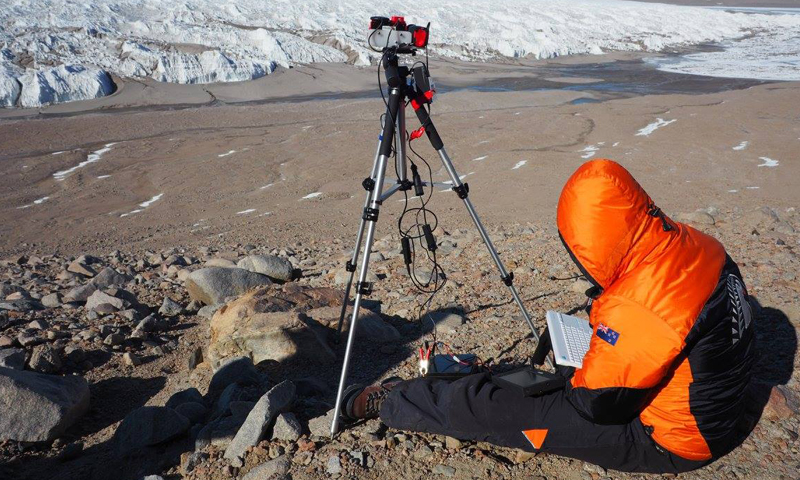
Rebound to New Zealand
Finally, after a period of 3 weeks, Sweta returned home on a C 17 globe master. A giant compared to the Hercules and more spacious. Enroute New Zealand, Sweta saw the night sky after days. Even though the professionals at the Antarctica base were professionals who ensured their safety and protection, she was itching to go back to civilization.
Resting her head on the window pane, Sweta closed her eyes and marvelled at what she had experienced the past few weeks. She learnt first-hand that Antarctica is as dangerous as it is beautiful and if you don’t treat her with respect you get to pay the price. Even the tiniest sort of negligence can be life threatening. She also caught a glimpse of how wonderful and scary Nature really is. She felt grateful that Nature is benevolent enough to nurture humankind, and wondered that if we aren’t careful, we just might experience her wrath.
Looking at the stamp in her passport, Sweta smiled and congratulates the little girl who did not budge from her dream of visiting the Antarctica despite criticisms. Rajasweta Datta is living proof that no dream is too big and no dreamer too small.




